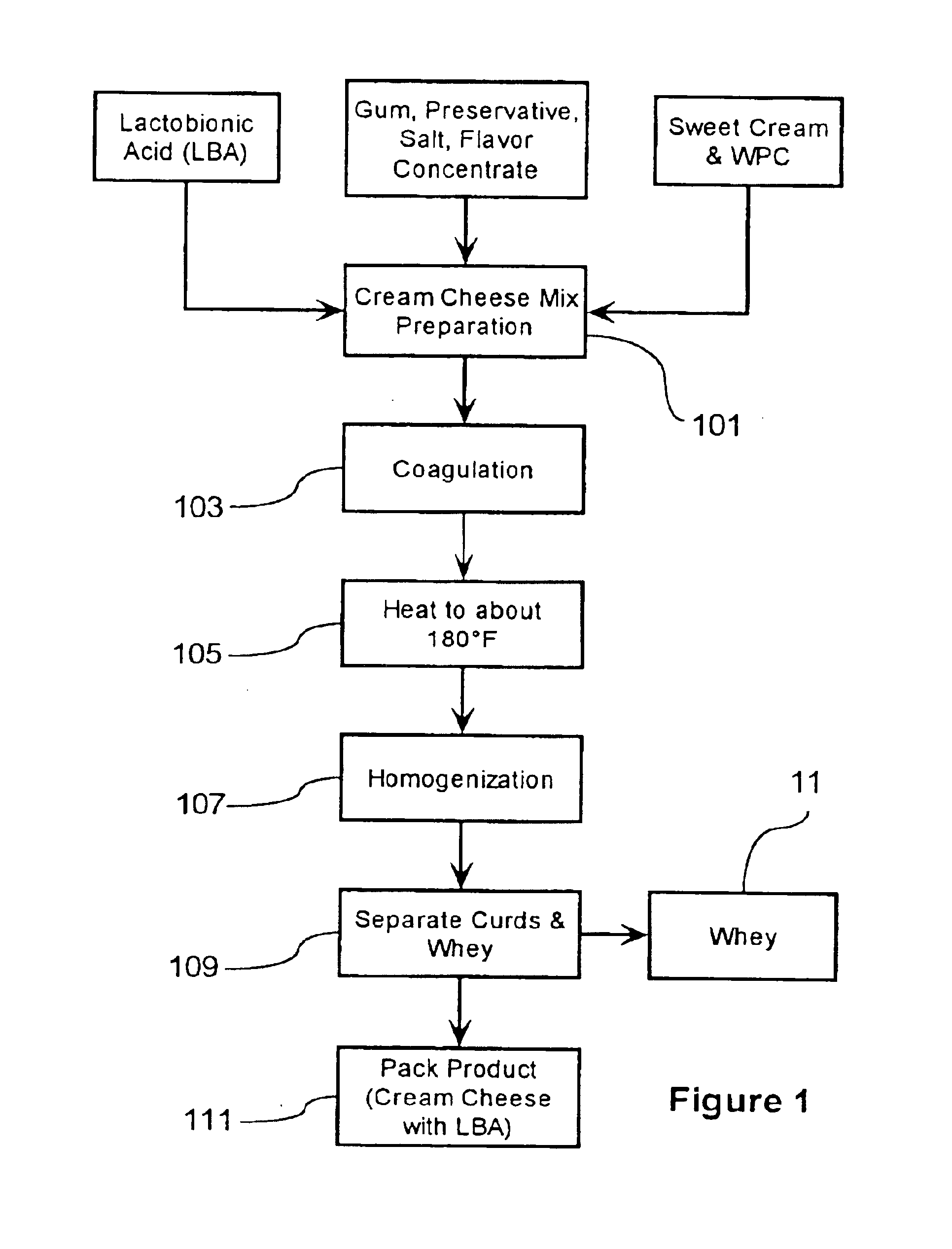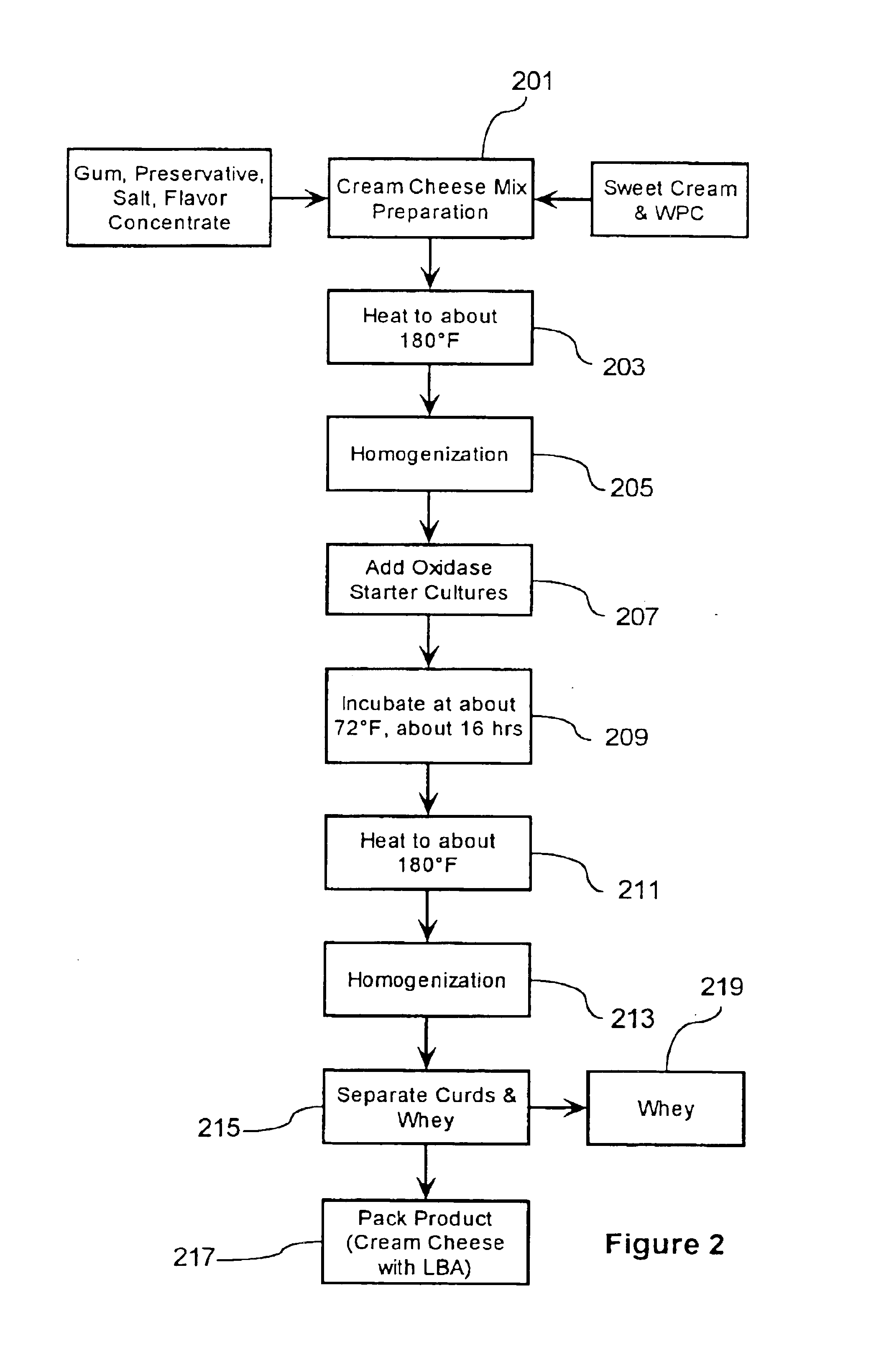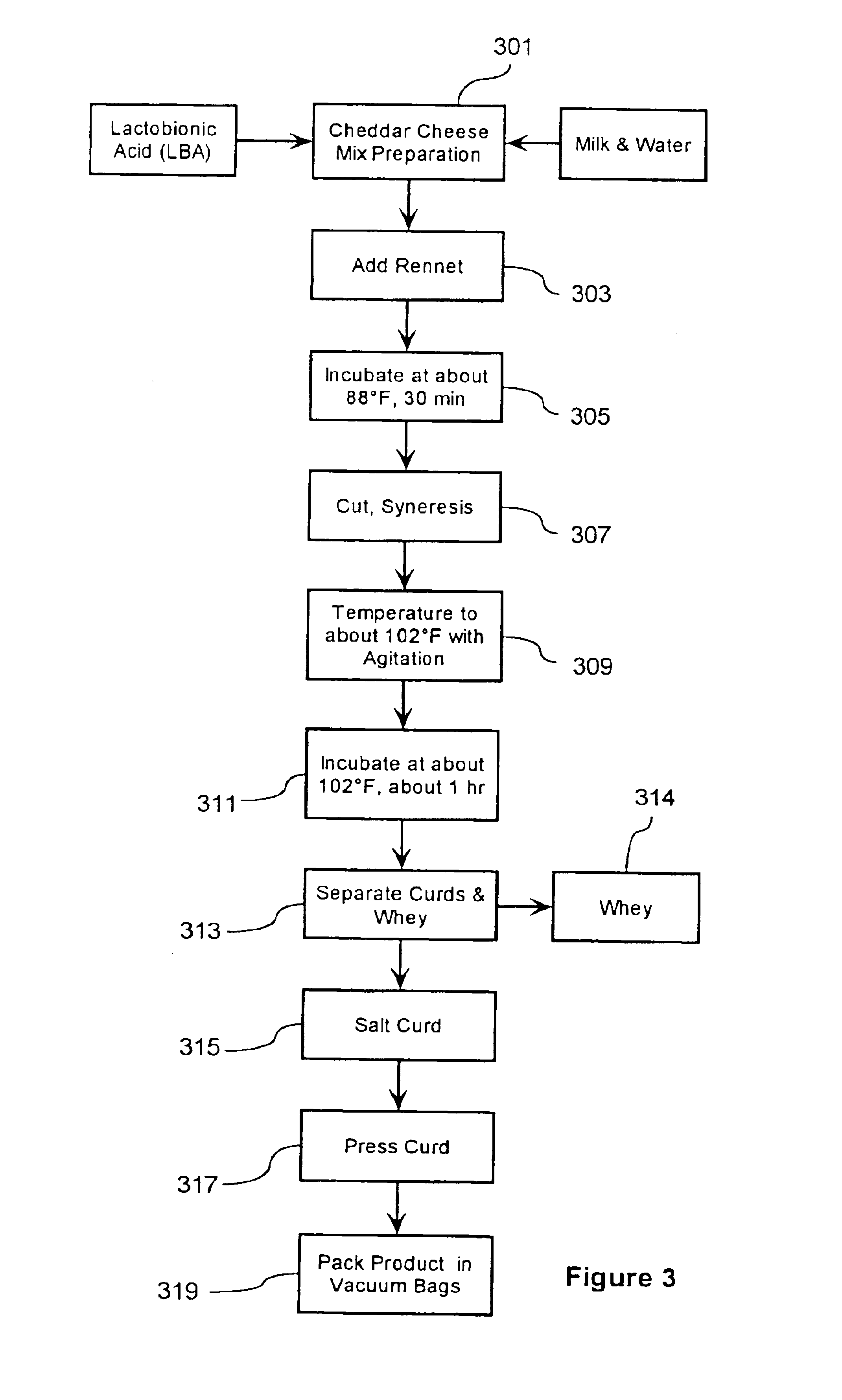Process for manufacturing cheeses and other dairy products and products thereof
a technology for dairy products and processing equipment, applied in the field of processing equipment for manufacturing cheese products and other dairy products, can solve the problems of inability to inability to accommodate off-flavors, and inability to produce milk products that meet the requirements of identity regulations, etc., and achieves the effects of improving product stability, reducing production costs, and reducing production costs
- Summary
- Abstract
- Description
- Claims
- Application Information
AI Technical Summary
Benefits of technology
Problems solved by technology
Method used
Image
Examples
example 1
[0067]An experimental composition incorporating features of one embodiment of the invention was prepared to demonstrate the use of lactobionic acid for direct acidification in the manufacture of cream cheese. The composition of the cheese mix prepared in this regard is presented in Table 1.
[0068]In order to prepare the cream cheese mixture, the lactobionic acid, commercially obtained from Lonza Inc. (Fairlawn, N.J.) as a white crystalline powder, was dissolved with stirring in the water used in the composition. The lactobionic acid was added in its free acid form in this experiment. The lactobionic acid-containing solution then was blended with the rest of the ingredients comprised of the sweet cream, ultrafiltered milk, salt (NaCl), and gum carob. The blend coagulated and the pH of the resulting mix was about 4.52. The blend was then cooked to about 180° F., and then homogenized at about 2500 psi. Throughout this process, the liquid dairy component was not permitted to cool to belo...
example 2
[0071]An experimental composition incorporating features of another embodiment of the invention was prepared to demonstrate the use of lactose oxidase enzyme to generate lactobionic acid in situ for acidification of cream cheese. The composition of the cream cheese mix is presented in Table 2. This composition was compared with a control composition representative of a conventional cream cheese.
[0072]In this experiment, an enzyme ingredient, lactose oxidase, was used to generate lactobionic acid in situ during the production of the cream cheese. The lactose oxidase was obtained from Novozymes A / S (Franklinton, N.C.). This lactose oxidase was a flavo-enzyme having FAD (flavin adenine dinucleotide) present as co-factor with the lactose oxidase.
[0073]In order to prepare the cream cheese mix, the sweet cream, WPC 80, salt, gum carob, cream cheese flavor concentrate, and K sorbate were blended. The blend was then cooked to about 180° F. by heating and held for about 5 minutes, followed b...
example 3
[0078]An experimental composition incorporating features of yet another embodiment of the invention was prepared to demonstrate the use of lactobionic acid for direct acidification in the manufacture of cheddar cheese.
[0079]A cheddar cheese mixture containing 20 g lactobionic acid dissolved in 475 ml milk and 5 ml water was prepared in a sterile beaker. 500 μL double strength CHY-MAX™ was then added to the mixture. CHY-MAX™ is a range of fermentation produced chymosin products, and it was obtained from Chr. Hansen, Inc., Milwaukee, Wis. The resulting mixture was incubated at about 88° F. for about 30 minutes. The coagulum was cut with a knife to allow syneresis. The coagulum was cooked to increase its temperature from about 88° F. to about 102° F. with frequent shaking in a water bath. Once the coagulum reached about 102° F,. it was incubated for about an additional 60 minutes at a pH of about 5.8, decanted, and then pressed to remove whey. The curd was salted with 0.7 percent sodiu...
PUM
 Login to View More
Login to View More Abstract
Description
Claims
Application Information
 Login to View More
Login to View More - R&D
- Intellectual Property
- Life Sciences
- Materials
- Tech Scout
- Unparalleled Data Quality
- Higher Quality Content
- 60% Fewer Hallucinations
Browse by: Latest US Patents, China's latest patents, Technical Efficacy Thesaurus, Application Domain, Technology Topic, Popular Technical Reports.
© 2025 PatSnap. All rights reserved.Legal|Privacy policy|Modern Slavery Act Transparency Statement|Sitemap|About US| Contact US: help@patsnap.com



